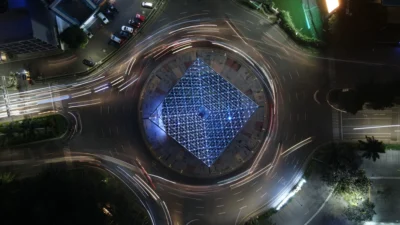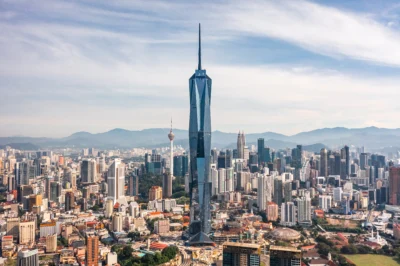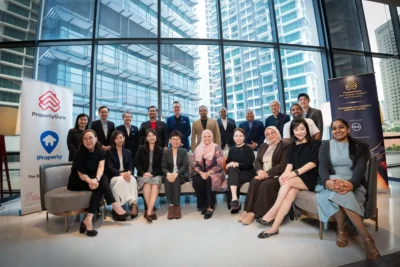Meet the woman who’s taking on Myanmar’s male-dominated design scene
After a decade in California, Mya Myitzu returned to Yangon to apply the interior design skills she learned overseas. We caught up with Myitzu to chat about her homecoming experience
Times may be changing at a breakneck pace in Myanmar, but for Mya Myitzu old ways of thinking can die frustratingly hard.
Myitzu, the Yangon-born country director for acclaimed Vietnam-headquartered architecture and design practice Noor Design, is the very embodiment of a modern Burmese with her independent attitude, forthright views and contemporary way of dressing.
She has established herself as among the foremost Burmese interior designers with her work on notable projects including the show flats and sales gallery of Gems Condominium, one of Yangon’s most luxurious new housing developments and Rangoon Teahouse, an updated take on a traditional Burmese teashop.
However, she bemoans the fact she still has to deal with outdated – and often sexist – attitudes in her day-to-day working life.
Most of the people in the business have no faith in a short woman, with a high-pitched voice and not quite five feet showing up to give direction.
“One of the biggest challenges is I face everyday in Myanmar is as a female working in a male-dominated field of work,” she says. “Most of the people in the business – owners, site managers, architects and even engineers – have no faith in a short woman, with a high-pitched voice and not quite five feet showing up to give direction. I often feel I have to explain and push relentlessly to have my choices accepted.
“Hopefully when special projects such as the Rangoon Tea House where I was given full discretion and other successful projects are appreciated, this will slowly change.”
In terms of respect and recognition, it certainly can’t hurt to have Noor on the CV. The Ho Chi Minh City-based practice is riding high at present. Its work on the high-end Aqua Mekong cruise boat was recently rewarded at Asia’s 2015 Hotel Design Awards, while other projects include luxury hotels in locations around Asia. In Myanmar, much of Noor’s (and, by extension, Myitzu’s) work is conducted through its local partner M. Interiors. Significant projects include everything from executive offices to restaurants and residential penthouses.
Although Myitzu is reattuning to Myanmar, the conservative environment contrasts starkly with her formative years as a designer in the United States, where she spent a decade. After excelling at the International School of Yangon, she left for California to study at the University of San Francisco before landing a job in Beverley Hills with famed interior designer Kelly Wearstler.
Rangoon Tea House
The glitz and glamour of the Los Angeles celebrity set was, quite naturally, an alluring proposition. However, Myitzu forsook the bright lights of the City of Angels to return to the rather dimmer illuminations of her home city.
“I wanted to come back to my family after living so far away from them for so long,” she explains “It was especially challenging to start up in the design industry here because wrong curtains, strange paint jobs, terrible layouts, and even large department stores without a service elevator are the norm. Good contractors are also hard to come by.
“It has not been easy but demand for high-quality design has really boomed in the last few years.”
Through her work with Noor and its boutique subsidiary M. Interiors, Myitzu has had a central role in pushing up the level of design standards in Yangon. She also helped abet a boom in new entertainment venues catering to emerging crowd of affluent locals with her design for Bar One 4, which sees hundreds of cars lined up outside on weekend nights.
Yet, despite her desire to take interior design in Myanmar onto the next level, Myitzu is deeply respectful of the country’s architectural heritage. Decades of political isolation during military rule may have been deeply detrimental in a number of ways, but it also left much of Yangon’s glorious colonial buildings intact.
The city, with its beguiling blend of Chinese, Indian, British and Buddhist influences, is regarded as an architectural treasure trove. And Myitzu is conscious of her responsibility to ensure that her designs are simpatico with the surrounding environment.
She worked with the non-profit organisation Yangon Heritage Trust on its renovation of the residence of former United Nations Secretary General U Thant and believes it is her patriotic duty to assist proactively in heritage efforts.
“When I am driving around in a car, I cannot help but to look at the sights around me. They never get old,” she comments. “ The architectural heritage of Myanmar deserves worldwide recognition and preservation both on a political and a grassroots level.
“We are here to help to promote the idea of having spaces in Myanmar that can be well organised, and designed with a strong sense of place. In our projects, we are conscious that we are in Myanmar but that does not mean to say that we are bound by traditional Myanmar architecture either. Great interior design is always aware of the outside environment.”
Although she freely admits that there are aspects of life in Yangon that she could do without – “the traffic,” she says. “Especially during the monsoon season.” – she has no regrets about heeding the call from home. With new restaurants and bars popping up with the regularity of a ticking metronome, the scene in Yangon is growing ever more sophisticated. Other advantages, according to Myitzu, include opportunities to push the design envelope and a surprising absence of red tape. For the Yangon native, however, it is the chance to put her stamp on the city’s regeneration that is the most compelling reason to be back in Myanmar.
Myanmar Agricultural and Development Bank is Mya Myitzu’s favourite building in Yangon
She singles out the Myanmar Agricultural and Development Bank as her favourite building in Yangon, citing its towering columns, art deco façade and riverfront location as favourite details. It is, she says, the exemplar of the kind of refurbishment project she would like to be involved in.
“Hopefully in my lifetime it will be tendered out to be a beautiful hotel, which I can take part in designing,” she says. “That kind of project a legacy I would love to leave. Yangon used to be one of the most glorious cities in Southeast Asia, and there is no reason she could not return to those days.
With innovative but conscientious designers like Myitzu leading the way, it is possible to share that enthusiasm.
Recommended
6 reasons Bekasi is rising as Greater Jakarta’s next hotspot
One of Greater Jakarta’s rising stars is prospering, thanks to ample recreation and a contingent of desirable housing projects
6 developments driving Asia’s green real estate shift
Developers are being incentivised to push a green agenda into daring new realms
The Philippines’ LIMA Estate drives sustainable industrial growth
LIMA Estate models a citywide vision that uplifts workers while appealing to climate-conscious employers
Malaysia property market rebounds with foreign interest and growth
The nation’s property market is stirring to life, fuelled by foreign buyers and major infrastructure drives







